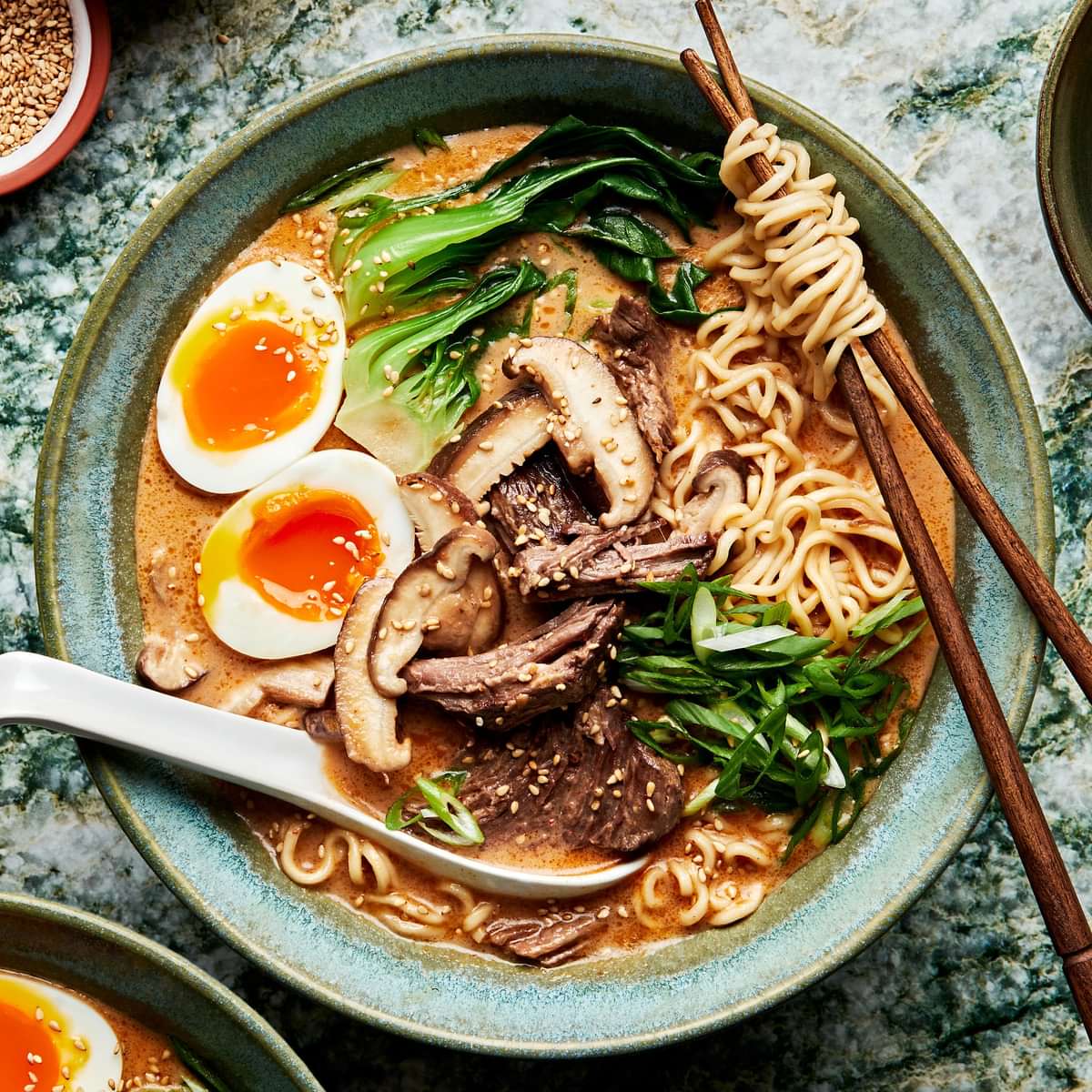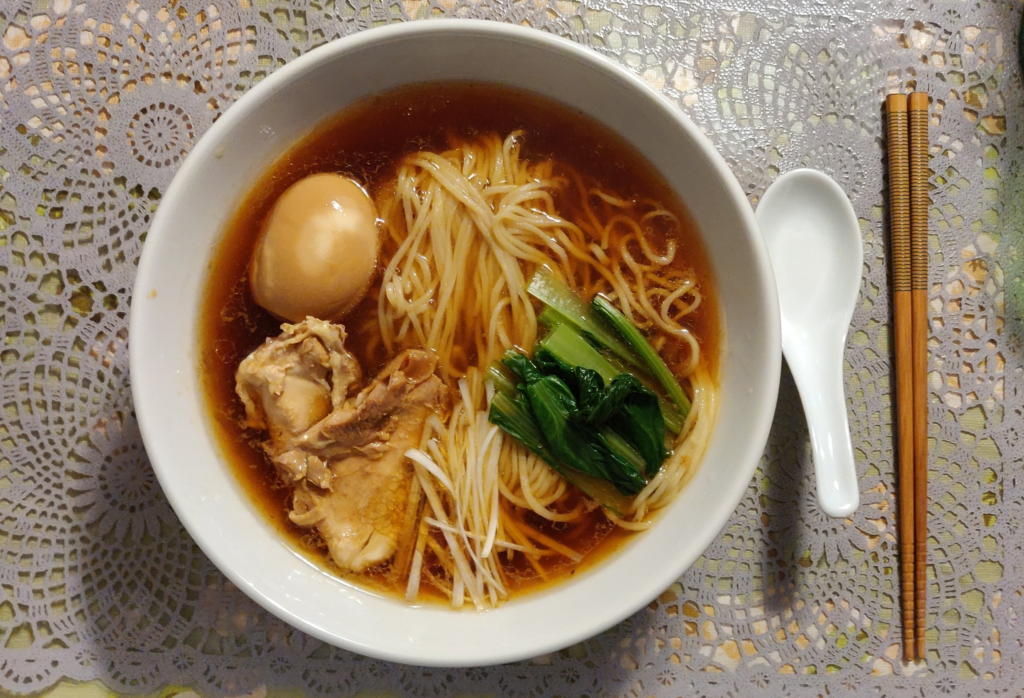Ramen is a beloved noodle soup that has captured the hearts of food lovers worldwide. But what is Ramen and where does it really come from? Ramen is Japanese in its evolution, although it borrows heavily from Chinese culinary traditions. This dish features Chinese-style wheat noodles served in a rich broth, often flavored with soy sauce or miso. Popular toppings include sliced pork, boiled eggs, green onions, and bean sprouts.

The origins of ramen trace back to Yokohama’s Chinatown in the early 20th century. The term “ramen” itself is derived from the Chinese word lamian (拉麵), meaning “pulled noodles,” but it evolved from southern Chinese noodle dishes. Ramen gained immense popularity in Japan, especially post-World War II, during food shortages. The invention of instant noodles by Momofuku Ando in 1958 further solidified ramen as a cultural and culinary phenomenon.
Table of Contents
How Is Japanese Ramen Made?
Curious about making authentic Japanese ramen noodles at home? Here’s a step-by-step guide to creating this delightful dish
Ingredients for Ramen
- Noodles: Chukamen (Chinese-style noodles) or thin pasta like spaghetti.
- Broth: Soy sauce, sake, sesame oil, salt, garlic, and green onion.
- Protein: Pork belly, boiled eggs.
- Toppings: Bean sprouts, green onions, optional chili oil (rayu), or white pepper.

Cooking Instructions
- Prepare the Pork– Salt the pork belly and refrigerate overnight. This enhances flavor.
- Make the Broth– Slice green onions, ginger, and smash garlic. Place them with the pork in a pot. Boil on high heat to remove impurities, then cover and simmer. A pressure cooker can reduce cooking time to 20 minutes.
- Cool and Strain– Let the broth cool, then strain it to separate the liquid and meat. Refrigerate overnight to remove solidified fat easily.
- Season the Broth– Heat the broth on low and season with soy sauce, sesame oil, and sake.
- Cook the Noodles– Boil noodles as per package instructions. If using pasta, add baking soda to the boiling water for a ramen-like texture.
- Assemble the Bowl– Pour broth into a bowl, add noodles, and layer toppings like sliced pork belly, boiled eggs, and bean sprouts. Optional additions include grated garlic or chili oil.

Who Invented Ramen?
The world owes its instant ramen to Momofuku Ando, a Taiwanese-Japanese inventor. In 1958, he created Chicken Ramen, the first instant noodle, in a shed in Ikeda, Osaka Prefecture. His innovation transformed ramen into a globally accessible comfort food.
Types of Ramen You Must Try
Japan boasts a variety of ramen styles, each with its unique flavor profile and see the different types of ramen.

- Tokyo-Style Ramen– Light soy-based broth.
- Kitakata Ramen– Thick, flat noodles in a soy or salt-based broth.
- Hakata Ramen– Rich tonkotsu (pork bone) broth.
- Wakayama Ramen– A blend of soy sauce and pork broth.
- Tsukemen– Dipping ramen served with separate noodles and concentrated broth.
- Aburasoba– “Oiled noodles” without broth.
- Hiyashi Ramen– Chilled noodles, perfect for summer.
- Butter Corn Ramen– A Hokkaido specialty.
- Muroran Curry Ramen– A curry-flavored twist.
- Sapporo-Style Ramen– Miso-based broth.
Can You Get Instant Ramen Noodles in India?
Ramen lovers in India can easily enjoy a variety of instant ramen noodles brands. Here are some popular options:

- Knorr Korean Kimchi Ramen
- Samyang Ramen Korean Noodles
- Too Yumm! K-Bomb Ramen
- Top Ramen Fiery Chilli Instant Noodles
- Top Ramen Chicken Noodles
- Asian 2PM Noodles Korean Ramen

Ramen doesn’t end with just a recipe or a bowl; it evolves with every taste and touch. From experimenting with ingredients to discovering regional varieties, it invites you into a world of endless possibilities. Whether it’s the nostalgic warmth of instant ramen or the thrill of creating your own masterpiece, ramen truly embodies a story in every slurp. So why not start your own journey today? The perfect bowl is waiting to be made.
